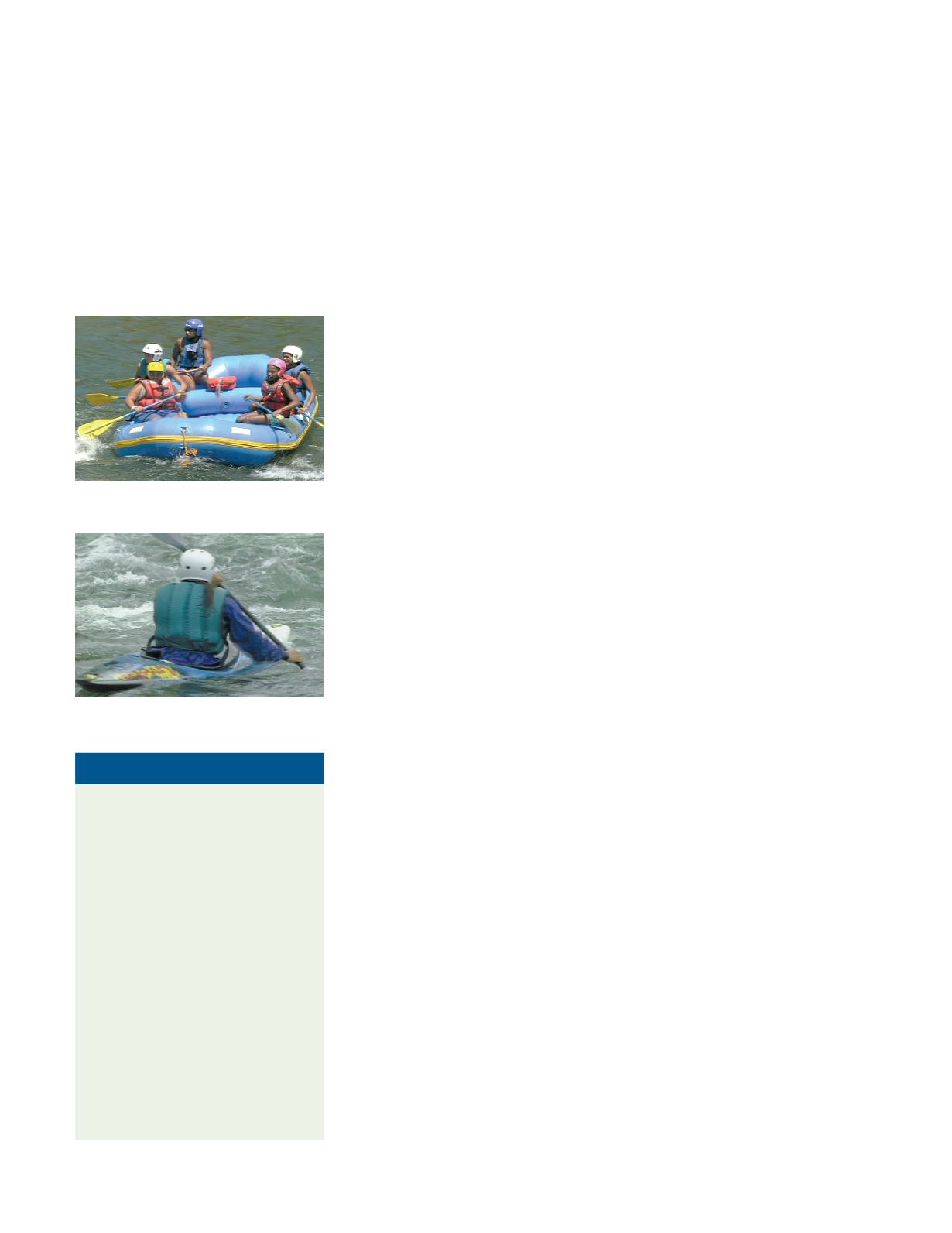

82
California Boating
A Course for Safe Boating
Chapter 3
u
Vessel Operation
Calm water rescue alone and with buddy
– Don’t leave the paddleboard
and swim to shore. Don’t try to swim with the paddle. After falling off the
paddleboard, return to the board first, then recover the paddle.
River current rescue with a buddy
(never paddle alone in whitewater)
–
In whitewater, never wear a leash around your ankle. Either attach the
leash to a quick release system on your life jacket or don’t wear one at all.
When dumped into the water hold onto your paddle, swim aggressively back
to your board and mount it as soon as possible. If you are unable to pull
yourself on the board, angle it toward calm water or the shore if the shore is
a safe option. Never try to stand up in current. If swimming without board
and paddle, angle the body away from rocks, strainers and debris. Swim
towards safety.
Surf zone rescue alone and with buddy –
Always protect the head when
surfacing. A downed paddleboarder in a surf zone should never position the
board between him/herself and the oncoming waves. Don’t try to swim with
the paddle. Get on the paddleboard first then recover the paddle. Do not
wrap the paddleboard leash around the hands or try to hold the paddleboard
from the leash connections.
Wind and weather rescue alone and with buddy –
In bad weather or
choppy water, always paddle on knees or lie down and hand paddle. A tow
line or leash may be used to rescue another stand up paddleboarder.
WHITEWATER PADDLING
Whether you paddle a kayak, canoe, or raft on a river, you must know about
river hydrology (the way the water moves)
before
you put in. It is important to
know about currents, eddies, holes, and other river features in order to paddle
safely. It’s best to hire a professional guide, or take classes on river running
and safety, before you take your own river trip. California has world-class
rivers, but you can enjoy them safely only after instruction.
River Features
A rapid is a section of turbulent water. Rapids usually run through steep
terrain, which increases the water’s speed. Rapids can vary a lot in length
and severity.
An eddy is a current that tends to flow upstream, usually found downstream
of an obstruction in the main current. An eddy creates a calm spot in the
river that paddlers can use to rest, regroup, scout and pull out of the main
current.
The terms “hole,” “reversal,” “keeper” and “hydraulic” all describe the same
river feature. This is where the river current pours over an obstruction or
dam and the water reverses, causing a revolving current that can trap boats
and people. You should avoid these “holes.”
A “strainer” is an obstacle the current flows through.
Whitewater raft
Whitewater kayak
WHITEWATER CLASS SYSTEM
Whitewater rapids are classified by
six degrees of difficulty:
Class I: Easy
Class II: Novice
Class III: Intermediate
Class IV: Advanced
Class V: Expert
Class VI: Extreme
See Appendix C on page 123 for a
detailed description of the whitewater
class system.
















